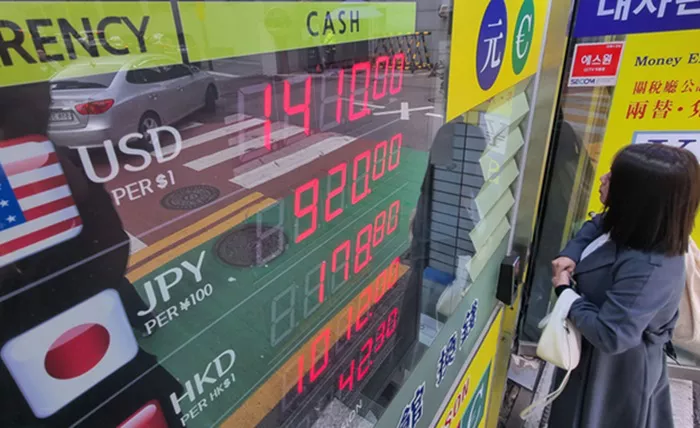A rally in onshore Chinese stocks, which followed a week-long holiday, has started to cool as traders express doubts about Beijing’s commitment to introducing additional stimulus measures. Shares in Hong Kong saw a significant drop in response to this uncertainty.
Initial Surge Followed by Paring Gains
The benchmark CSI 300 Index rose by 5.1% during mid-day trading, initially surging almost 11% in the opening minutes. However, equities began to pare their gains after officials from China’s top economic planner, the National Development and Reform Commission (NDRC), refrained from announcing any substantial stimulus during a recent press briefing. In contrast, a gauge of Chinese shares listed in Hong Kong plummeted by as much as 11%, reversing gains made while onshore markets were closed.
Recent Rally Fueled by Stimulus Measures
The CSI 300 had enjoyed a nine-day winning streak through September 30, bolstered by a series of stimulus measures, including interest rate cuts and increased liquidity for banks. “The durability of this China rally will depend on action following words on the fiscal side of the equation,” stated Aleksey Mironenko, global head of investment solutions at Leo Wealth in Hong Kong. He emphasized that upcoming policies following Politburo and State Council statements would be crucial in determining whether their investment approach remains tactical or strategic.
Skepticism Among Investors
Even before mainland markets reopened, skepticism about the surge in Chinese shares was palpable. Many strategists and fund managers expressed caution regarding the recent rebound, urging a wait-and-see approach for Beijing to deliver on its stimulus promises with actual funding. Concerns were also raised about the overvaluation of many stocks in the current market environment.
Risks to Monitor
Morgan Stanley strategists, including Laura Wang in Hong Kong, highlighted risks such as overheating in the A-share market and the Chinese government’s follow-through on recently announced policy stimulus as critical factors to watch amid the ongoing stock market rally.
Record Trading Volume
Turnover in Shanghai and Shenzhen reached a record 2.6 trillion yuan ($368 billion) during Tuesday’s session, surpassing trading volumes seen on September 30 when the CSI 300 Index recorded an 8.5% surge. The increased activity led several brokerages to report temporary freezes in their trading apps due to the surge in volume.
Anticipation of a Busy Trading Session
Anticipation had been high as Chinese stocks in Hong Kong had been rallying while onshore markets were shut. Local brokerages prepared for a busy trading session, with many professionals in information technology, operations, and customer service canceling their holidays. During the Golden Week break, the number of account openings at major brokerages reached a record high, reflecting strong client demand across both online and offline channels.
Shift in Market Focus
The Hang Seng China Enterprises Index, which comprises Chinese stocks trading in Hong Kong, experienced a steep decline as attention shifted back to onshore markets. Having jumped more than 30% over the preceding month, it was previously the best-performing equity gauge among over 90 tracked by Bloomberg. “There is some convergence in the markets — a rotation from Hong Kong to China,” noted Marvin Chen, a strategist at Bloomberg Intelligence in Hong Kong.
Government Pledges Increased Spending
Officials from the NDRC announced plans to expedite spending while reiterating intentions to enhance investment and support for low-income groups and new graduates. They also committed to issuing ultra-long sovereign bonds next year to finance significant projects, along with advancing a 100 billion yuan investment in key strategic areas initially budgeted for 2025.
Currency Movements and Economic Challenges
During the policy briefing, China’s offshore yuan briefly dipped into losses as the stock rally lost momentum but later stabilized. The onshore exchange rate, which had been closed for five sessions, declined by 0.6% to 7.066 per dollar. Yields on the nation’s benchmark bond initially rose by seven basis points but later adjusted to 2.18%. Despite aiming for around 5% growth this year, recent economic data suggest this target may be difficult to achieve, given sluggish consumer spending and an ongoing property downturn.
Historical Context of Market Volatility
China’s equity market has experienced multiple boom-and-bust cycles. Facing slowing growth and disinflation, the government initiated a stimulus strategy in late 2014, leading to a massive stock market rally that ultimately collapsed in mid-2015. The Shanghai Stock Exchange Composite Index more than doubled from October 2014 to June 2015, only to plunge over 40% within two months.
Call for Fiscal Reform
“We need fiscal, and then hopefully some real major economic reform,” stated Eva Lee, head of Greater China equities at UBS Global Wealth Management, during an interview on Bloomberg Television. She emphasized that without significant measures by the end of the year, the market would likely remain stagnant.
Conclusion
The current state of the Chinese stock market reflects a complex interplay of optimism and skepticism among investors. While recent rallies indicated a recovery, the lack of substantial stimulus measures from the government has left many questioning the sustainability of this upward trend. As the situation evolves, investors will need to remain vigilant, closely monitoring government actions and broader economic indicators to navigate the challenges ahead.
Related Topics:

